The speakers in a few words
PLENARY SPEAKERS
Isabelle Cantat (IPR, Rennes)
|
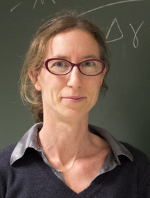
|
Isabelle Cantat’s research focuses on liquid foams, such as shaving foam, the froth on beer, the foam used to put out a fire, or used to extract copper-rich minerals. A liquid foam is in large majority a dispersed gaseous phase, with a small minority of a continuous liquid phase. At the scale of a macroscopic sample of foam, the measured viscosity is several orders of magnitude larger than that of the liquid phase (and of course also much larger than that of the gas phase). The explanation of this high viscosity is still an open question. To answer it, we must resolve the mysteries of flows in the liquid phase, induced at the scale of bubbles and films, by the global deformation of the foam. A flow’s properties are given by the deformability of the liquid/gas interfaces, and by the gradients of surface-tension, known as the Marangoni effect.
Isabelle Cantat is professor at the Institut de Physique de Rennes (IPR), and is head of the Soft Matter team. She did her PhD in Grenoble, followed by a postdoc in Düsseldorf in 1999. Since then, she has worked in Rennes, using both theoretical and experimental approaches to the problem of liquid foams. The support of the IUF and then the ERC has permitted her to launch the research on “film deformation” at the IPR.
Web : perso.univ-rennes1.fr/isabelle.cantat/
|
Eric Collet (IPR, Rennes) Recipient of the Ancel Prize (SFP) 2017
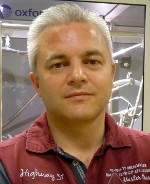 |
Eric Collet conducts his research on photoinduced phase transitions in condensed matter, working at the boundary between the physics and chemistry of materials. He seeks to understand and control their mechanisms, using femtosecond laser pulses, combining optical spectroscopy and ultra-fast structural analysis (X-ray diffraction, XANES) at synchrotron and X-FEL. These techniques make it possible to understand how functions emerge and how a new light-induced electronic state is stabilized by structural relaxation on the time scale of elementary atomic motions. He is also interested in the set of non-equilibrium mechanisms controlled by laser excitation and the non-linear response of certain materials, where a photon can transform several molecules.
After a BDI CNRS thesis at the Laboratory Groupe matière Condensée et Matériaux at Rennes, Eric Collet completed a post-doctorate at the Léon Brillouin laboratory at CEA Saclay. He was then recruited as a lecturer at the University of Rennes 1, where he initiated with Hervé Cailleau the activity on "photoinduced phase transitions"; an activity that he developed as part of his appointment to the IUF. Eric Collet is now a professor in Rennes 1 and assistant director of the Institut de Physique de Rennes (IPR). He leads the international laboratory associated with Japan working on this topic of ultra-fast photoinduced phase transitions: hitting materials with light and electric fields and watching their real time dynamics.
Web: blogperso.univ-rennes1.fr/eric.collet/
|
Sara Ducci (LMPQ, Paris) Recipient of the Ancel Prize (SFP) 2016
|
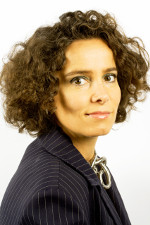
|
Sara Ducci is a professor at the University Paris Diderot; she directs the team which develop AlGaAs sources for the generation of nonclassical states of light, one of the promising platforms for quantum information applications. This platform combines a number of advantages; operation at room temperature, the generation of light by electronic injection, and the manipulation of the photon’s states via the electro-optical effect. It is also compatible with standard devices used in standard telecom networks. Together, these aspects make this a very interesting candidate for future quantum technology.
Sara Ducci did her PhD at the University of Florence on the emergence of shapes in non-linear optical systems. During her stay at the Laboratory Kastler Brossel, she worked on quantum optics in optical parametric oscillators. After a year as a teaching and research assistant at the École Normale Supérieure of Cachan, she joined the Laboratoire Matériaux et Phénomènes Quantiques in 2002. There she launched a research axis on quantum photonics in AlGaAs devices. Between 2012 and 2017, she was a junior member of the Institut Universitaire de France. She received the Ancel Prize of the SFP in 2016. She is currently responsible for the masters physics programme at the University Paris Diderot, she is a member of the section 30 of the Committee National of Universities, and editor of the American Optical Society’s journal “Optica”.
Web : www.mpq.univ-paris-diderot.fr/DUCCI-Sara-111
|
Silvano De Franceschi (INAC, Grenoble)
|
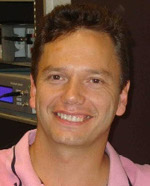
|
Dr. Silvano De Franceschi is an expert in quantum nanoelectronics and experimental mesoscopic physics. He received his PhD in 1999 at the Scuola Normale Superiore of Pisa and, since 2007, he owns a position of staff scientist at the Institute for Nanoscience and Cryogenics. In 2005 he was awarded the Nicholas Kurti European Prize for his achievements in the field of quantum transport and, in particular, his works on the Kondo effect in quantum dots and on hybrid normal/superconductor nanostructures. He obtained an ERC Consolidator Grant (2012-2017), as well as a Chaire d’Excellence “Juniors” (2007-2011) and a Jeunes Chercheuses et Jeunes Chercheurs Grant (2008-2013) from the French Agency for Research. At present, his research activity is largely concentrating on the development of silicon-based devices for quantum information processing. He co-leads the Grenoble Quantum Silicon Group (http://quantumsilicon-grenoble.eu) and coordinates the European project MOS-QUITO (MOS-based Quantum Information TechnOlogy).
Web: inac.cea.fr/Pisp/silvano.defranceschi/
|
Marina Galand (Imperial College, UK) Recipient of the Holweck Prize (IOP & SFP) 2018
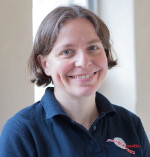 |
Marina Galand's research activities focus on the deposition of energy sources in planetary atmospheres in the Solar System and beyond. These sources include solar radiation and particles from magnetised environments. In particular, Marina Galand has developed sophisticated kinetic and fluid models of the plasma created and perturbed by these sources; she has used these models in an original way as binding elements between multi-instrumental datasets from international space missions (e.g., Cassini, Venus Express, Rosetta) in order to enhance the science return. She has focused so far on Venus, Earth, and Mars, Jupiter and its moon Ganymede generating its own magnetic field, Saturn and its moon Titan holding a thick and organic-rich atmosphere, comets sublimating nearly-pristine material from when the Solar System was formed, and gas-giant exoplanets orbiting other stars.
Marina Galand is currently a Reader at the Department of Physics at Imperial College London, UK. She did her PhD at the "Université Joseph Fourier" (now Université Grenoble Alpes) on the Earth’s high-latitude upper atmosphere. She then worked in the US for 10 years, including at the National Center for Atmospheric Research (NCAR) and the National Oceanic and Atmospheric Administration (NOAA) in Boulder, CO, and at the Center for Space Physics at Boston University, MA. After moving to the UK, she has been leading research in planetary atmospheres. Her current collaborations in close link with ESA and NASA space missions (e.g., Rosetta, Cassini, JUICE) extend primarily over Europe and the US. Her research has been rewarded by the Zeldovich Medal from COSPAR (2006) and the Fernand Holweck Medal and Prize from the IoP and SFP (2018).
|
Emmanuelle Gouillart (CNRS/Saint-Gobain, Aubervilliers)
To appear
Roland Horisberger (PSI, Switzerland) Recipient of the Charpak-Ritz Prize (SPS & SFP) 2018
|

|
The 2018 Charpak-Ritz, jointly awarded by the French Physical Society and the Swiss Physical Society, has been bestowed to Roland Paul Horisberger for his numerous contributions to the development of precision silicon vertex detectors for particle physics experiments as well as for the application of these technologies in X-ray photon sciences. His ground breaking work for the silicon microstrip detector for DELPHI at LEP, the H1-central vertex detector at HERA and the pixel detector for CMS have been crucial for the excellent physics performances and discoveries of these experiments. He successfully transferred these novel technologies, like for instance the PILATUS pixel detectors, to the field of X-ray photon sciences and such enabled a large number of new scientific results. With his group at PSI he has created the foundations that allowed in 2007 the creation of a spin-off company that now is the market leader in single photon counting pixel detectors at synchrotrons world wide.
|
Hamid Kellay (LOMA, Bordeaux)
|
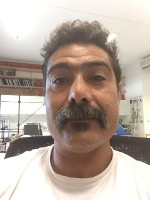
|
Hamid Kellay’s activities are centred on the comprehension of flows in different systems and under different conditions; turbulent flows in films and soap bubbles, extensional flows in complex fluids, and flows in granular media. For example, he has worked on the nature of viscous losses in flows in two-dimensional turbulence, and he has shown, contrary to the received wisdom, that the losses are initmately related to turbulence properties at the smallest scales. Another component of his research concerns the modelling of aspects of atmospheric flow, using a half-bubble heated at its equator. He also illustrated the complexity of the interaction of a flow with a complex fluid structure, notably the elongation, via liquid bridge failure experiments or dynamic wetting experiments. In addition, he studies the rich phenomenology of a diluted granular flow striking an obstacle or being struck by a projectile.
After studies at Harvard University, Hamid Kellay did a DEA in theoretcial physics at the Ecole Normale Supérieure, follwed by a PhD there within the Laboratoire de Physique Statistique in 1993. He then worked as a research assistant in the Department of Physics at the University of Pittsburgh. He became a Maitre de Conférences at the University of Bordeaux in 1994, becoing professor there in 2002. His research activities lead to him becoming a junior member of the IUF in 1998, to a CNRS Bronze medal in 1999, the Abragam prize of the Académie des Sciences in 2004. He has been a senior member of the IUF in 2009.
|
Cyril Proust (LNMCI, Toulouse)
|
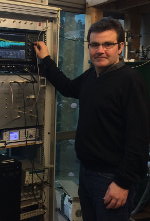
|
Cyril Proust’s research is devoted to the electronic properties of high temperature superconductors. He has developed new experimental techniques in the strongest magnetic field available in the world in order to destroy superconductivity and to probe the underlying state of electrons. This approach has led to two major breakthroughs: in 2007, the discovery of quantum oscillations in cuprates showing that those compounds are metallic and not insulator. Then in 2016, the discovery of a signature of a critical point that could be seen as the key of the origin of high temperature superconductivity.
Senior researcher at the high magnetic field laboratory in Toulouse, he received the Louis Ancel prize from the SFP in 2011. Member of the “quantum materials” program of the Canadian Institute For Advanced Research, he is co-director of the Associated International Laboratory “Quantum circuits and materials” between Sherbrooke University and the CNRS.
|
André Thiaville (LPS, Paris-Sud)
|
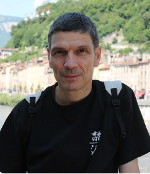
|
André Thiaville studies magnetic structures in matter, such as domains, domain boundaries, boundaries in boundaries, and singular points. On one hand, these structures reflect the magnetic interactions in the matter, by their form, size and energy. On the other hand, the movement of these structures form an excellent visual detector of the changes that one induces in a magnetic material. In recent years, domain boundaries and magnetic vortices have served as detectors for the electrical current in samples. For these studies, one requires a palette of magnetic microscopes, and a theory of the continuous mechanics of magnetism known as micro-magnetism.
André Thiaville is a CNRS director of research at the Laboratoire de Physique des Solides at the University Paris-Sud (Orsay). He is in charge of one of the research teams in this Laboratory. His thesis work (1988, Orsay) was carried out at the CEA-LETI in Grenoble. He did a postdoc in at Tsukuba in Japan (now the AIST), which initiated his ongoing collaborations various Japanese research groups.
Web : www.lps.u-psud.fr/spip.php?article2205
|
SEMI-PLENARY SPEAKERS
Basile Audoly (Caltech, USA)
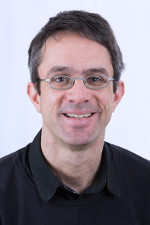 |
Basile Audoly’s research concerns non-linear mechanics and more specifically the mathematical and numerical analysis of such structures under strong deformation. He is currently working to improve one-dimensional models to allow them to characterize non-linear phenomena, such as the buckling of viscous streams, pattern selection in biological structures, or the localization of deformations in a measuring tape. The challenge of this research is to propose analytical or numerical methods for resolving equations that a well-known to be difficult to solve, and to establish a connection between these mathematical models and experimental observations.
Basile Audoly did his PhD at the Laboratoire de Physique Statistique (ENS Paris) under the direction of Yves Pomeau. He is a CNRS director of research, and works at the Laboratoire de Mécanique du Solide at the Ecole Polytechnique. He is equally an associate professor in the department of mechanics at the Ecole Polytechnique, but is currently finishing a one year sabbatical at in the Division of Engineering and Applied Science at Caltech.
Web : www.lmm.jussieu.fr/~audoly/
|
Jacqueline Bloch (C2N, Paris-Sud)
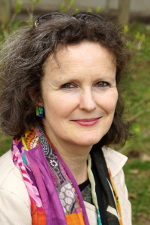 |
Jacqueline Bloch is CNRS Research director at the Center for Nanoscience and Nanotechnology (C2N). She is an experimentalist, expert in light matter coupling in semiconductors. Making use of state of the art nanotechnology facilities available at C2N, her group has made pioneering contributions in the study of quantum fluids of light. She was awarded the 2015 Jean Ricard Prize and the 2017 CNRS Silver medal.
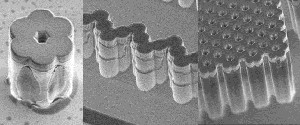
Web : www. polaritonquantumfluid.fr
|
Lionel Bureau (LiPhy, Grenoble)
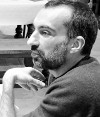 |
Hydrodynamic and adhesive interactions between biological objects and polymer-decorated surfaces are ubiquitous in biophysics, in contexts ranging from blood microcirculation to the design of functional substrates for cell culture. Lionel Bureau’s research is focused on understanding such interactions, via an interdisciplinary experimental approach combining microfluidics, optics, physico-chemistry and design of biomimetic systems.
Lionel Bureau is a research associate at CNRS and head of the « Soft Matter : Organization, Dynamics and Interfaces » group at the Laboratory for Interdisciplinary Physics (LIPhy) in Grenoble. After his PhD thesis in the Groupe de Physique du Solide in Paris and a postdoc at Collège de France, he first worked on surface forces and nanorheology at the Institute for Nanosciences in Paris. In 2010, he joined the LIPhy to develop research projects at the frontier of soft matter physics and biology.
|
Virginie Chamard (Institut Fresnel, Marseille)
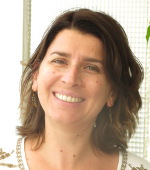 |
The use of synchrotron radiation is at the heart of the research activities of Virginie Chamard. She exploits the properties of spatial and temporal coherence of recent x-ray sources, which allow her unprecedented access to structural information. In particular, there is the “lens-free” x-ray microscopy (such as the Bragg ptychography that Virginie developed), which gives unparalleled 3D images of crystal structure. This microscopy has revealed the detailed structure of a various complex systems, such as crystalline biominerals. It is now implemented in numerous synchrotrons around the world.
Virginie Chamard was recruited by the CNRS in 2003. Since 2008, she has carried her research programme at the Institut Fresnel in Marseille, where she recently founded COMiX, a team which develops new methods for 3D microscopy by exploiting similarities and complementarities between visible light and x-rays. In 2016, she obtained a ERC consolidator grant whose objective is to develop new microscopes to advance the understanding of biomineralisation processes.
Web : www.fresnel.fr/spip/spip.php?article1374
|
Valentina Giordano (ILM, Lyon)
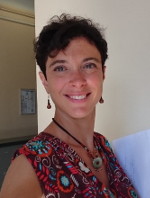 |
The research activity of Valentina Giordano is focused on the dynamics of amorphous and complex crystalline systems, thermal transport and thermoelectricity. Her original approach consists in combining the collective dynamics as measured by inelastic x-ray or neutron scattering techniques, the atomic dynamics as measured by X-ray photons correlation spectroscopy, and the structure as measured by high energy high resolution X-ray diffraction, with macroscopic laboratory measurements such as differential scanning calorimetry, electric and thermal conductivity, with the aim of understanding the microscopic mechanisms behind the transport properties, as well as relaxation and aging processes in glasses.
Research Interests. Structure, collective and atomic dynamics is disordered systems, Complex crystalline systems : from lattice dynamics to transport properties. Thermal transport and thermoelectricity.
Former beamline scientist at the inelastic X ray scattering beamline ID16 of ESRF, in Grenoble, Valentina Giordano was recruited by the CNRS in 2011, and joined the Institut Lumiere Matiere of Lyon. There she integrated the research line on novel materials for thermoelectricity with a special interest in understanding the microscopic mechanisms controlling thermal transport, which can be investigated by means of phonons dynamics in both crystalline and amorphous systems. All her research activity strongly benefits from a network of collaborations, both in the experimental and theoretical domain, that she has succeeded in building up in France as well as in Europe and Chile. Besides her research activity, She has recently integrated the CNRS section 5 committee, She is chair of the ESRF C05 committee for the evaluation of proposals, and expert evaluator for the European Commission.
Web : http://ilm.univ-lyon1.fr/
|
Mark Goerbig (LPS, Paris-Sud)
| |
Mark Goerbig's major research interest is concerned with the theory of quantum phenomena in condensed-matter physics that emerge from collective electronic behaviour. In particular, he has studied so-called relativistic electrons in graphene, since the discovery of an unusual quantum Hall effect in this material. A discovery which has given birth to a whole class of other two-dimensional materials, i.e. materials with a thickness of one or just a few atoms. These materials, such as the transition-metal dichalcogenides, constitute a novel class of semiconductors with exotic properties, similarly to topological materials. The latter is another aspect of Mark Goerbig's research. These topological materials have an intricate bulk-edge correspondence due to their topological band structure, which means that even insulators can display protected conducting surfaces with high electronic mobility.
Mark Goerbig has been working at the Laboratoire de Physique des Solides (LPS), Orsay, since his integration to CNRS in 2005. At present he is a director of research and head of the theory group at LPS. In addition to this research position, he is teaching as a professor at École Polytechnique at Palaiseau. He is laureate of the CNRS bronze medal in 2010.
Web: www.equipes.lps.u-psud.fr/GOERBIG/
|
Sophie Guéron (LPS, Paris-Sud)
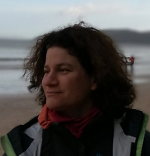 |
Sophie Guéron is a CNRS Director of Research in the Mesoscopic Physics Group of the Laboratoire de Physique des Solides at Orsay. She is interested in coherent quantum transport, particularly using superconductors as extremely sensitive probes of mesoscopic objects such as graphene, bismuth nanowires, metals, etc.
Web: www.equipes.lps.u-psud.fr/spm/spip.php?rubrique1
|
Lionel Hirsch (IMS, Bordeaux)
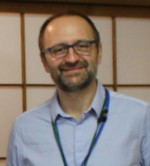 |
Lionel Hirsch’s research centres on the integration of organic semiconductors into electronic and optoelectronic devices. His work extends from applications, such as organic solar-cells and photo-detectors, to fundamental mechanisms, such as the transfer of charge in organic semiconductors and the control of interfaces.
Lionel Hirsch obtained his PhD in material science in 1996, and joined the CNRS in 1998 to work on blue and white diodes based on GaN. He is now a CNRS director of research in the Laboratory IMS at the University of Bordeaux, and is co-author of more than one hundred articles in international scientific journals. He also directs the Organic Electronic and Microsystems Group since 2009.
Web: oembordeaux.cnrs.fr
|
Etienne Janod (IMN, Nantes)
To appear
Xavier Noblin (INPHYNI Nice)
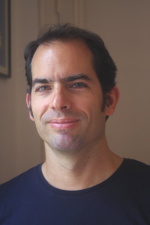 |
Xavier Noblin develops his research at the interface between soft matter and biophysics for which the mechanical effects are dominant. First, it concerns interfacial phenomena: jets, vibrated drops, superhydrophobic surfaces but also microfluidics and cavitation bubble in water under tension in confined environments. The second concerns plant biomechanics: rapid movements and water transport. These issues also involve phenomena of cavitation, wetting, microfluidics studied on both natural and biomimetic systems.
Xavier Noblin did his thesis on wetting phenomena at the Physico-Chimie Curie laboratory under the direction of Françoise Brochard-Wyart, then a post-doctoral stay from 2004 to 2006 at Harvard University on plant biophysics. He has been research fellow at CNRS (section 5) since 2006 at the Laboratoire Physique de la Matoère condensée (LPMC) in Nice. Since the 01/01/2017, after the merge of the LPMC with the institut Nonlinéaire de Nice (INLN), the new unit is called Institut de Physique de Nice (INPHYNI) where he is leader of the team "MIMIC" since 2013.
Web: xnoblin.free.fr
|
Daniel Riveline (IGBMC, Strasbourg)
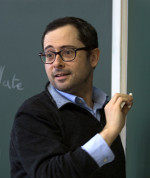 |
Daniel Riveline is an experimental biophysicist who probes self-organisation phenomena in living matter using physics and quantitative biology. After receiving his PhD in physics in 1997 from the Institut Curie in Paris with Albrecht Ott and Jacques Prost, Daniel went to the Weizmann Institute of Science in Israel for a 2-year postdoctoral position in biology with Alexander Bershadsky. In 1999, he started his group at the University of Grenoble. In 2010, after a sabbatical in biology at the Rockefeller University in New York with Paul Nurse, he moved to the University of Strasbourg to establish a group in Cell Physics and launched a new Masters program in Cell Physics. Daniel, a CNRS Research Director, has contributed to revealing the collective effects of myosin molecular motors, mechanosensing of focal contacts and cell-cell contacts, ratchetaxis or directed cell motion in the absence of chemical gradients, the promoted growth of lamellipodia with synthetic compounds, and mechanisms for the constrictions of cytokinetic rings.
|
Guillaume Schull (IPCMS, Strasbourg)
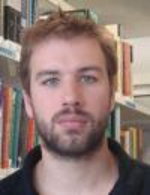 |
Guillaume Schull is an expert in experimental condensed matter physics and nanophotonics. His research focuses on the fundamental electronic and optoelectronic properties of atomic-scale structures, such as single molecules, graphene nanoribbons and organic polymers, which he studies using cryogenic scanning tunnelling microscopy. In recent years, his team has built the smallest existing LED (light emitting diode) and developed methods to characterize the light emission and vibronic properties of single-molecules with sub-nanometric resolution. This opens the way to hyper-resolved fluorescence microscopy. They are now focusing on the quantum properties of these molecular emitters.
Guillaume Schull has been a CNRS researcher at the IPCMS in Strasbourg since 2009, where he is leading the scanning tunneling microscopy group together with Fabrice Scheurer and Laurent Limot.
Group webpage: www-ipcms.u-strasbg.fr/stmipcms/
Personal webpage: www.ipcms.unistra.fr/?page_id=9705&lang=en
|
Virginie Simonet (Institut Néel, Grenoble)
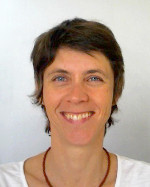 |
Virginie Simonet is interested in problems linked to frustration. She started by studying local order in quasi-crystals and super heated liquids. This lead to a first experimental demonstration of a conjectured dating from 1952, by demonstrating icosahedric order in liquid metals. Her research them continued in the domain of non-conventional magnetism, including the experimental study of materials presenting various networks of magnetic moments (chains of spins, networks based on triangles and tetrahedra) or where conventional magnetic order is destabilized by competition phenomena. This leads to new phsyical properties and new states of matter. Her expertise in principally in neutron diffraction.
After a thesis at the Laboratoire de Physique des Solides, Virginie Simonet became an ATER at the laboratoire de cristallographie à Grenoble, and was rapidly recruited by the CNRS at Orsay. She joined the Laboratoire Louis Néel (now the Institut Néel) in Grenoble, which lead to her swtich from structural to magnetic frustration. She is currently a director of research, and director of the French federation of neutron scattering research.
|
Maria Tchernycheva (C2N, Paris-Sud)
| |
The research of Maria Tchernycheva deals with semiconductor nanostructures; she studies both their structural, electric and optical properties, and their integration in optoelectronic devices. The objective is to exploit nano-structuration to improve the performance of existingcomponents, and furthermore create new functionalities. One of the new opportunities that Maria Tchernycheva is exploring consists of developing mechanically supple sources of light, consisting of semiconductor nanowires encased in polymer membranes. She aims to use this approach with inorganic materials to develop flexible displays with high luminosity and long live time.
Maria Tchernycheva graduated as an engineer from the Ecole Polytechnique (X98), and has a PhD in physics (2005) and HDR (2016) from the Université Paris Sud. Between 2005 and 2006, she worked as a postdoctoral researcher at the Laboratoire de Photonique et Nanosctructures, developing semiconductor nanowires, after which she joined the Institut d’Electronique Fondamentale as a CNRS researcher. She currently works in the Centre de Nanotechnologies et Nanosciences à Orsay at the interface between material science and optomechanics.
Web: www.c2n.universite-paris-saclay.fr/en/research/photo/
|
Matthieu Wyart (EPFL, Switzerland)
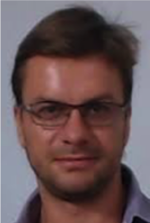 |
One focus of Matthieu Wyart’s research is the classification of the elementary excitations controlling the linear and plastic response of amorphous materials. He introduced the idea that some of these excitations are marginally stable in the solid phase. This marginality fixes key aspects of the structure, and implies that there is a pseudo-gap in the density of excitations. These ideas are important to describe the low-temperature properties of glasses, the elasticity near the jamming transition, the rheology of dense granular and suspenson flows, the yielding transistion in foams or metal glass, and more generally to describe glassy systems with sufficiently long range interactions. Wyart’s work has also focused on the neuronal circuit of simple organisms.
Matthieu Wyart is an associate professor in the Institute of Physics at the EPFL in Switterland. After studies at the Ecole Polytechnique, he obtained his PhD at the CEA, Saclay. He was a George Carrier Fellow at Havard University before joining the Physics Department at NYU in 2010. He became associate Professor in 2014, and moved to EPFL in 2015. He received a Sloan fellowship in 2011, and became a Simons investigator in 2015.
Web: pcsl.epfl.ch/
|
|
























